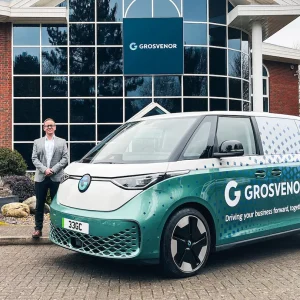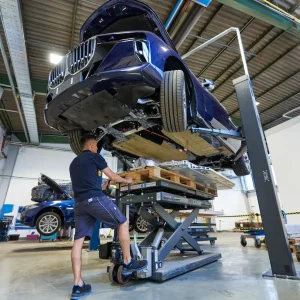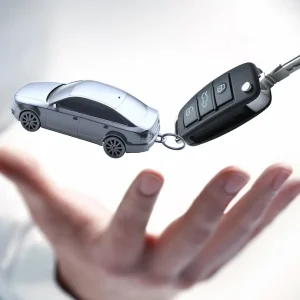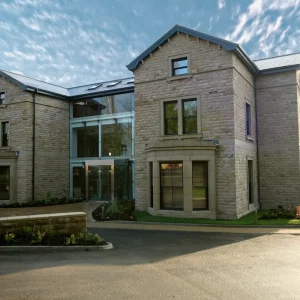The Ampera is a car that sums up what’s going on across Vauxhall at the moment. Although 2012 sales were, at first glance, not what the firm was hoping for, there’s more going on than meets the eye.
“The Ampera has done an unbelievably good job at opening doors to fleets that are predominantly Ford, VW or premium brand user-choosers, and allowing us to showcase our products and our service,” Vauxhall fleet sales director James Taylor tells BusinessCar. “If you look at the number of demos we’ve done, we’ve done a really good job of getting it out there to fleet decision-makers. You can’t fail to be impressed by the car and it helps with what people think about Vauxhall.”
Taylor admits the early sales haven’t been as high as the brand had expected, but says there’s more to the car than pure numbers. “The sales are less than forecast, but the Government changes to taxation definitely didn’t help, and the economic environment hasn’t helped, but at the end of the day it’s not about sales success, it’s about showcasing the technology and leading the market, to rub off on our other models,” he says. “The bigger impact on the consideration of Vauxhall is the main objective.”
Taylor is hoping for the ‘Prius effect’ for Vauxhall: “Look what the Prius did for Toyota with green, innovation and technology leadership. The Ampera needs to do the same job for Vauxhall.”
The tax changes referred to are the removal of the 5% BIK band for cars below 76g/km that’s currently due to kick in for the 2015-16 tax year. If it still comes in as scheduled, it would take the BIK payments for a higher-rate tax payer on a mid-spec Ampera Positiv from £62 to £161 per month, or from £744 to £1934 for the tax year. “We’ve been lobbying hard, and hopefully it will get fixed, which will help,” comments Taylor. The chancellor revealed in his 2012 Autumn Statement that the Treasury is looking again at the issue of company car taxation on ultra low-emission cars, as all the vehicles incentivised by the Government’s £5000 grant for clean vehicles are hit by the huge BIK hike. An announcement is expected in the March Budget Statement.
The Ampera’s success in the 2013 BusinessCar Awards, where it was voted Green Model of the Year by the readers of the magazine and website, is one of many, with the car also picking up a BusinessCar Techie award last August and also being voted European Car of the Year for 2012.
But it’s not the only success story for Vauxhall, a brand that stuck to its stated aims of reducing short-cycle business in 2012, despite that meaning it sacrificed overall fleet market leadership. As pledged, it cut 15,000 short-cycle units from its registrations and is now already reaping the early rewards in RV terms. “2012 was a year for rebalancing the business. It’s about balancing supply to the used car marketplace because we were in a position where we selling the wrong mix into used, so we were having to push harder on some models such as Insignia,” explains Taylor. “The Insignia’s price has improved steadily in the past few months and we expect that to continue.”
Taylor claims early indications are of a residual increase of up to £1000 on some models sold at between seven and nine months, although the measures put in place at the beginning of last year only start to show results when the first cars returned to the market in the fourth quarter of last year.
“There were a lot of people waiting for and expecting us to fall of course. What’s good now is that we’ve implemented the plan and proven with the statistics that we’ve had an early RV improvement, which has given us the confidence that the plan was working and would deliver results.” It has been successful enough for a strategy of Europe-wide reduction in short-cycle volumes to be under development, Taylor claims.
Vauxhall’s fleet boss is taken aback at the size of the UK rental market last year, given the company’s removal of 15,000 units: “It surprised me the rental market was so strong. I instinctively wouldn’t have thought the demand was there,” he reveals. “It’s normally steady at around 200,000 units; this time it was nearer 215,000.”
The company had a strong year with end user and leasing customers in 2012, with Taylor claiming Vauxhall was top of the table for true fleet registrations in the fourth quarter of 2012, making it five months in a row. “Some of that is down to RV improvement over the past three years, some has been through the introduction of the Tech Line trim, which is running at 20% of Astra and Insignia registrations, and some was timing with some of our accounts having a quieter first half and being more active in the second,” Taylor says.
There’s also a renewed focus on the whole-life costs of Vauxhall models, specifically around the service, maintenance and repair. So far it has manifested itself in a move to two-year servicing for the Combo, Vivaro and Movano LCV range, which Taylor claims knocks up to £500 from the SMR cost, while a change to the tyres fitted to the Insignia ES model has also brought savings. A new brake kit for the Insignia also reduces the SMR by around £150 over a four-year cycle, according to Taylor, and that move is something Vauxhall will migrate across to other models in time.
Looking ahead, more work on wheels and tyres will help the Insignia’s whole-life cost in particular when the facelifted model arrives in September, as well as benefiting the 2014 model year Astra. “Some of it is tyre profile, staying the same size but with a more common profile at a cheaper price, and we’ll also look at tyre sizes, maybe where we have wheels one-inch bigger than the competition,” Taylor reveals. He said the company is likely retain the larger wheels as a no-cost option for user-choosers, though.
“We’ve made good progress on whole-life costs, [but] there’s still quite a bit more we can do and it’s about getting it right on the right vehicles.” That attitude has been something of a change internally for Vauxhall, which is now more aware of the needs of the corporate department when specifying vehicles. “The product team is now very fleet-focused and understands what drives SMR, so we get to signal what we want,” says Taylor. “Critically, it’s about future cars, the next-generation Astra and Insignia, and when they are designed, to have fleet in mind from day one. We need to have the best-looking cars but also with the best costs.”
“We need to get smarter at giving our opinions. In the past we’d not had a loud enough voice in decision-making three years out,” he continues. “If you’re costing an extra £100 per car across a fleet, it could add up to a phenomenal amount of money.”
But it’s the focus on true fleet registrations that will dominate Vauxhall’s thinking for 2013, and Taylor says it has begun healthily. “We won more business last year than in any of the past four or five and we’ve started the year with more single-badge deals than before, which should grow our true fleet share through 2013,” he concludes. “We’re really pleased and optimistic – we’ve made the right decisions and we’re in good shape.
New models to fill niches
There aren’t any major business car launches for Vauxhall this year, but there are still some important and interesting new models designed to fill niches and add some flair and glamour to the company’s range.
The Fiat 500-rivalling city car the Adam and small crossover Mokka have both gone on sale, and are handy for Vauxhall because, with the exception of a few Astra or Insignia customers migrating to the Mokka, will be incremental sales as they’re new segments for the company. “We now need to make sure people are aware of them and that they are on choice lists,” says fleet sales director James Taylor.
The next new model is another niche, in the form of the four-seat convertible Cascada. “We’re not expecting to sell particularly many in fleet or retail, it’s very much a halo car,” says Taylor. “We’re trying to get it positioned as a replacement for the old Saab 9-3 from a GM point of view, and whatever we sell will be incremental but relatively low volume.”
Later in the year comes a facelifted Insignia, with the focus said to be on improving interior quality and technology, and there’s also the first appearance of the company’s new 1.6-litre diesel engine. It will debut in the Zafira Tourer, cutting emissions by 10g/km compared with the 1.7 CDTi it replaces, before going into other models across the range.
Looking ahead, the new British-built Vivaro medium-sized van will arrive in 2014.





